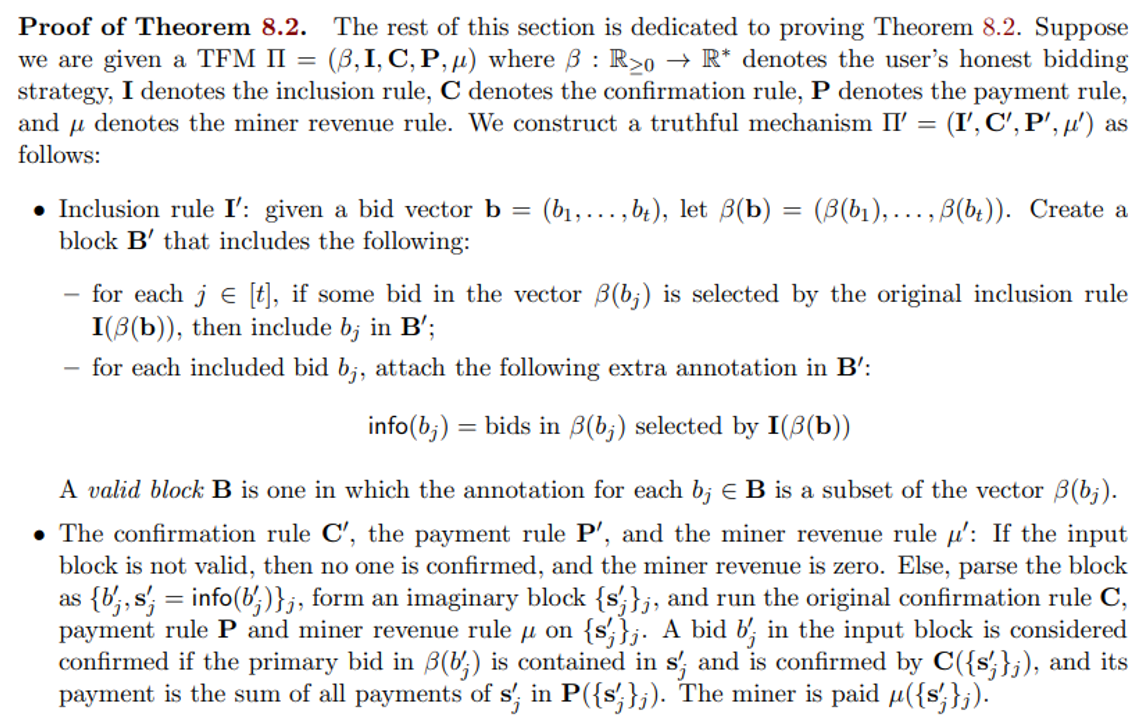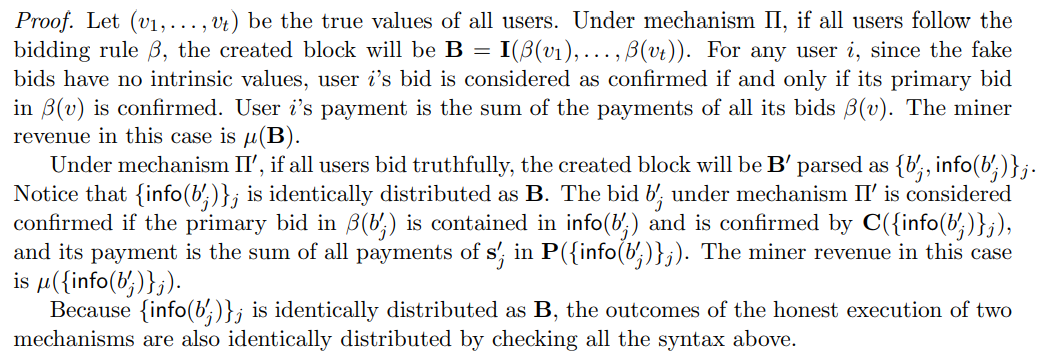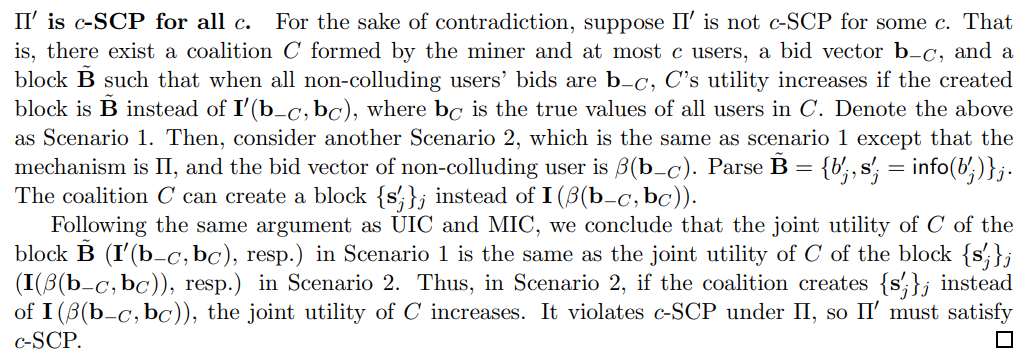This content originally appeared on HackerNoon and was authored by EScholar: Electronic Academic Papers for Scholars
Table of Links
1.2 TFM Incentive-Compatibility Notions: A Cheat Sheet
Definitions
Warmup: Impossibility of UIC + MIC + Global SCP for Deterministic Mechanisms
Impossibility of UIC + MIC + Global SCP for Randomized Mechanisms and 5.1 Proof Roadmap
Feasibility and Impossibility of UIC + MIC + OCA-Proof
6.1 A Non-Truthful Mechanism with UIC + MIC + OCA-Proof
6.2 Impossibility of UIC + MIC + OCA-Proof for Truthful Mechanisms
How to Circumvent the Impossibilities and 7.1 Allowing the Globally Optimal Strategy to Coordinate
7.2 Allowing the Globally Optimal Strategy to Output Multiple Bids
Static Revelation Principle for Transaction Fee Mechanisms
8.1 Static Revelation Principle: Bidding Rules That Output Single Bid
8.2 Static Revelation Principle: Allowing Bidding Rules that Output Multiple Bids
A. Comparison of Collusion-Resilience Notions
8.2 Static Revelation Principle: Allowing Bidding Rules that Output Multiple Bids

\ To handle this difficulty, we need to relax the syntax of the inclusion rule. Earlier in our definitions (Section 2.1), we require that the inclusion rule outputs a subset of the input bid vector. In this section, we slightly relax this syntax requirement, and allow the honest inclusion rule to append some metadata for each bid.[11] The purpose of the metadata in the honest execution is to encode the auxiliary information for the blockchain’s confirmation/payment rules. This relaxation in the syntax is non-essential for the impossibility results in this paper, since all the proofs for our impossibility results (Sections 4, 5 and 6.2) still hold even if the honest inclusion rule can append the metadata. Now, we are ready to present the revelation principle.
\ Theorem 8.2. Let c be any natural number. Given any non-truthful TFM Π for block size k that is UIC, MIC, and c-SCP with an individually rational bidding rule, there exists a truthful TFM Π′ for block size k that is UIC, MIC, and c-SCP such that 1) the honest bidding rule is truth-telling, and 2) given any vector of true values, the outcome under an honest execution of Π is identically distributed as the outcome under an honest execution of Π′.
\

\

\ Lemma 8.3. Assume the miner follows the mechanism honestly. Then, the outcome when all users follow the bidding rule β under the mechanism Π is identically distributed as the outcome when all users bid truthfully under the mechanism Π′.
\

\ Lemma 8.4. The following statements hold.
\ • If Π is UIC, then Π′ is UIC.
\ • If Π is MIC, then Π′ is MIC.
\ • For all c, if Π is c-SCP, then Π′ is c-SCP.
\ Proof. We will prove three properties individually.
\

\

\

\ The proof of Theorem 8.2 directly follows from Lemma 8.3 and Lemma 8.4.
\

\
:::info Authors:
(1) Hao Chung∗, Carnegie Mellon University (haochung@andrew.cmu.edu);
(2) Tim Roughgarden†, Columbia University and a16z (crypto tim.roughgarden@gmail.com);
(3) Elaine Shi∗, Carnegie Mellon University (runting@cs.cmu.edu).
:::
:::info This paper is available on arxiv under CC BY 4.0 DEED license.
:::
[11] We assume the metadata do not occupy the block space. See Remark 3 for more discussion.
This content originally appeared on HackerNoon and was authored by EScholar: Electronic Academic Papers for Scholars
EScholar: Electronic Academic Papers for Scholars | Sciencx (2025-08-05T11:45:04+00:00) How Bidding Rule Metadata Could Reinvent Blockchain Incentives. Retrieved from https://www.scien.cx/2025/08/05/how-bidding-rule-metadata-could-reinvent-blockchain-incentives/
Please log in to upload a file.
There are no updates yet.
Click the Upload button above to add an update.
